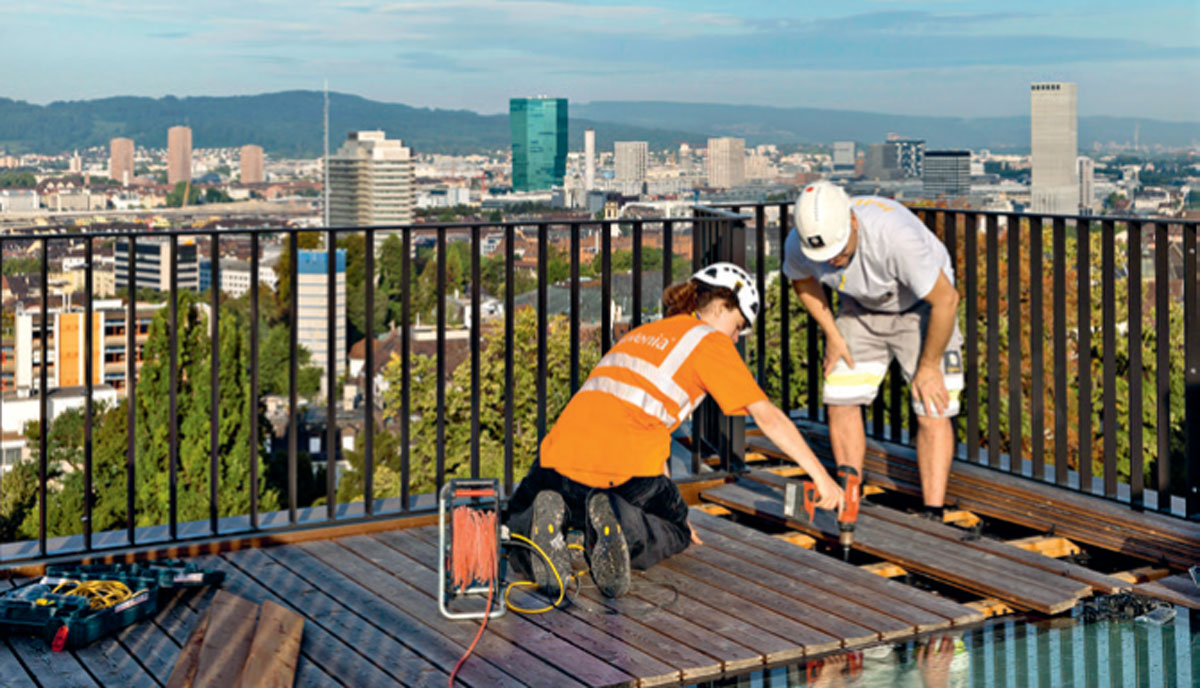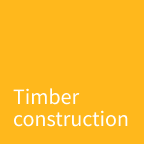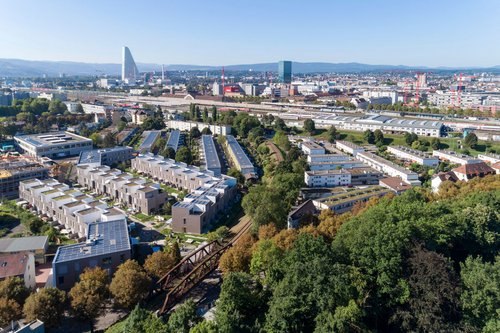
Wood reclaims the city
Cosy chalets in the mountains or stables for agriculture: wooden buildings are typical for rural areas. Cities, on the other hand, are built of stone or concrete and steel, or so the common opinion goes. But this image no longer corresponds to reality. For some years now, more and more wooden buildings have been built in Swiss cities. And it is not only prestige architecture that is being made of wood. The natural raw material is now also the first choice for entire residential and commercial buildings or for additional storeys.
Fire protection is a question of construction
Wooden construction is thus reclaiming a territory from which it had once been banned in the late Middle Ages. In those days, regular fires had caused many municipal administrations to ban wooden buildings. If those responsible had had our current knowledge of fire protection, these bans would have been superfluous – and our old towns would have had a different, much woodier "face". Today, we know exactly how wood has to be built so that it does not pose a fire hazard.
Urban building density with maximum sustainability
The latest fire protection regulations from 2015 also allow the construction of up to eight-storey buildings without special requirements. The major advantages of timber construction can now also be fully exploited in densely built-up urban areas. These include, in particular, the sustainability requirements that are becoming increasingly important for developers and tenants. As the "schorenstadt" residential development in Basel impressively demonstrates, timber construction meets these requirements better than any other construction method. Wood not only optimises energy consumption during construction. The renewable raw material also ensures the best possible ecological balance over the entire life cycle of a building – from the production of the building material to its deconstruction.
As if made for building in the city
Those who build with wood in the city also disturb the neighbours much less during construction, which has a positive effect on the acceptance of a building project. The high degree of prefabrication of timber construction elements reduces noise and dust emissions on the construction site on the one hand and enables highly efficient construction on the other. In Switzerland's largest timber housing project to date, "sue&til" in Winterthur Neuhegi, for example, Implenia planned, manufactured and installed over 250,000 timber components in a fully digital and coordinated process.
Another advantage of timber construction comes into its own particularly when building structures are condensed by adding storeys. Timber constructions are much lighter than solid constructions, for example in concrete, and therefore allow larger additions to existing buildings from a structural point of view.
Preliminary projects for first wooden high-rise buildings
The many advantages make it clear that the reconquest of our cities by timber construction is only just beginning. However, it is not a question of either-or. Today, wood is mostly used in combination with other materials. Depending on which building material makes the most sense for which construction area. Today, however, there are significantly fewer limits to the use of natural materials than in the past. In Vienna, for example, a 24-storey wooden high-rise is currently being developed. And this project, too, is likely to be just one stage on the way to a future in which wooden buildings are once again part of the normal street scene in our cities.
Interview with Patrick Lier, Head of element construction

Mr. Lier, why is wood in the city today harmless in terms of fire protection?
From the point of view of fire protection, it is crucial that a fire cannot spread uncontrollably. To achieve this, the defined fire compartments must meet specific requirements. In the area of façades, this can be achieved, for example, by inserting fire barriers to prevent a fire flashover. In the case of visible timber structures, the cross-section can be dimensioned in such a way that after the required time of burning, the remaining cross-section of the beam continues to guarantee the statics.
How have these insights been gained in recent years?
Countless 1:1 tests were carried out – including at the Swiss Federal Laboratories for Materials Testing and Research (EMPA). This made it possible to show exactly what effect which measures have. For example, one finding that is perhaps somewhat surprising at first glance is that we can even use wood as fire protection for steel girders in the new "sue&til" wooden residential building in Winterthur. The wood cladding protects the steel from the fire and the resulting heat, which would cause the steel girder to collapse.
What other important changes have the 2015 fire safety regulations brought with them?
Since then, we can easily build eight-storey buildings in wood instead of six, and with special measures, high-rise buildings are now also possible. Another new feature is that staircases can be built in wood. By completely encapsulating the wooden construction elements with gypsum fibre boards, the construction fulfils the high fire protection requirements for escape routes. This speaks even more in favour of the use of wood in construction.



